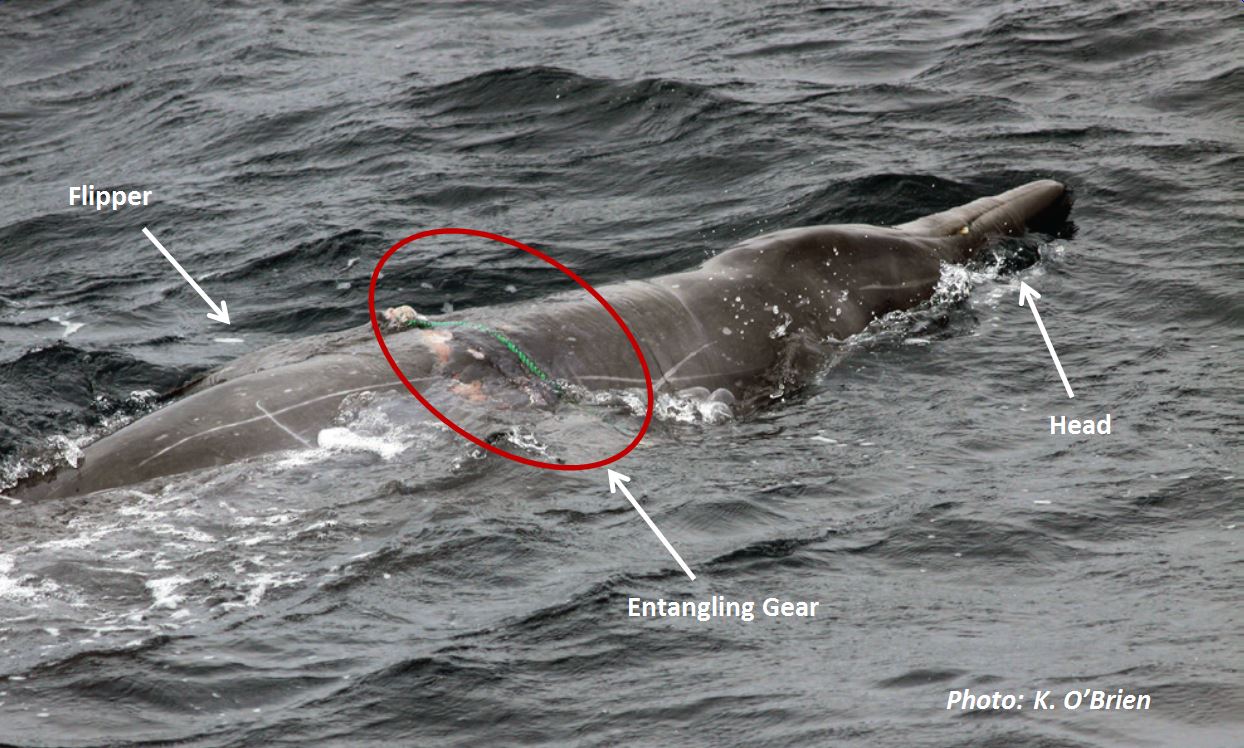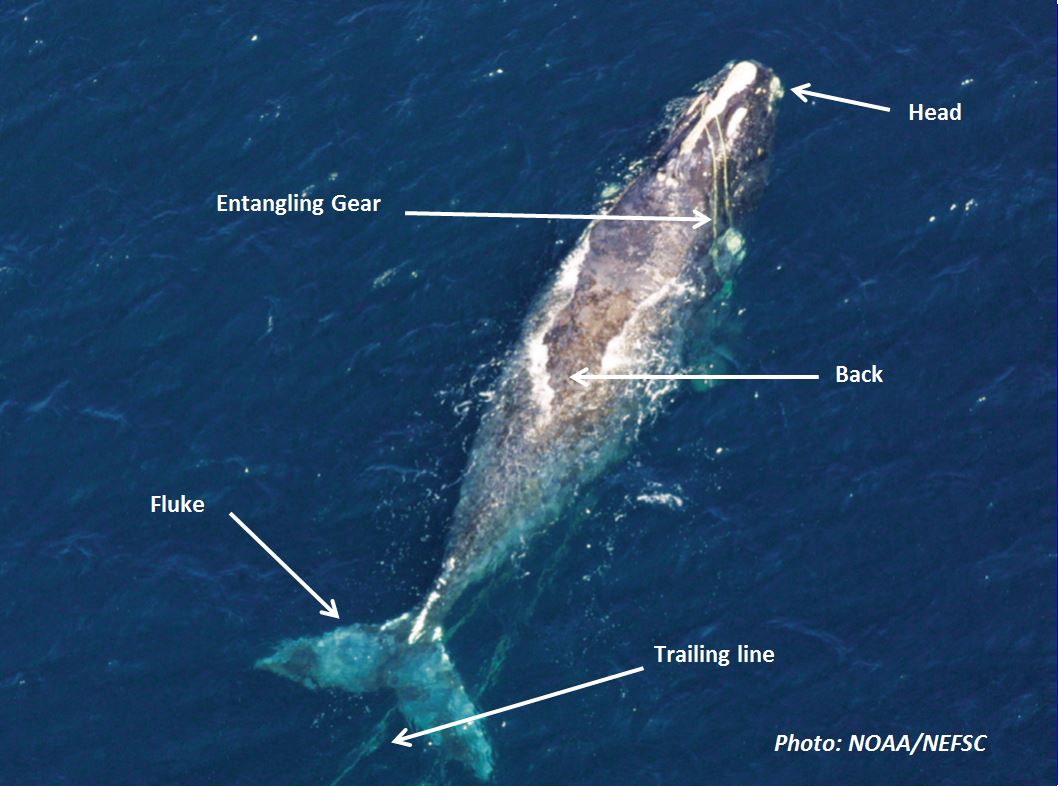Information on Entangled, Injured or Dead Whales, Dolphins or Porpoises
If you encounter an entangled, injured or dead whale, dolphin, porpoise, or sea turtle
Please report it as soon as possible.
If possible, keep the animal in sight until the report is made. If you are unable to do so, please email information (along with any photos and videos).
Identifying entangled animals
- Look for buoys or lines trailing behind or wrapped over the animal’s back, flippers, tailstock, head or through the mouth
- Do not get too close to the animal as it can be dangerous
- Do not startle it or run over trailing gear
- Do not attempt to remove gear as this is dangerous and can further injure the animal
Identifying dead animals
- Long-dead animals may be white
- Animals may bloat and eventually burst
- Many larger animals float belly up
What to do: identify; record; report
Maintain a wide berth, but record:
- Date, time, and location (lat./long.) of animal
- Type of animal (species if possible)
- Description of key body parts, including colour, any tags or unique markings
- Estimated length of the animal
- Description and location of injuries and/or gear (type, colour)
- If the animal is alive, description of the behavior: Is it struggling to surface; free swimming or anchored; and which direction is the animal headed?
- If the animal is dead, the body condition (decomposed, bloated, white)
- If possible, please provide photographs and video of the animal, especially close-ups of the tail, flukes, flippers, entangling gear and visible injuries
- Date modified:


